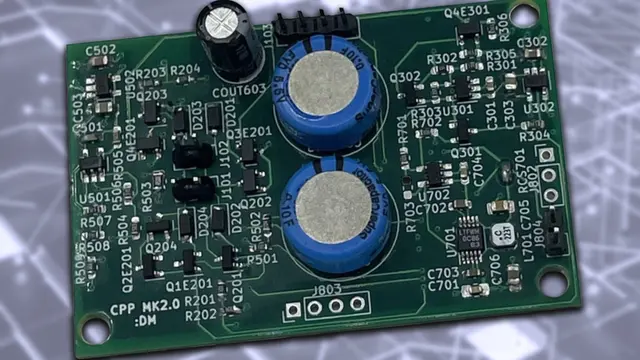In a remarkable leap forward, researchers at MIT have developed a sensor that can autonomously harvest energy from its environment, rendering batteries and wired connections obsolete.

This cutting-edge technology, detailed in the January issue of the IEEE Sensors Journal, could revolutionize the monitoring of machinery, especially in hard-to-reach places like the inner workings of ship engines.
Traditionally, sensors require batteries or a wired power source, limiting their utility in many critical applications.
Imagine sensors embedded within a ship’s engine, providing real-time data on performance without the hassle of battery replacements or wires.
Thanks to the ingenuity of MIT researchers, this vision is nearing reality.
The newly developed sensor is uniquely capable of harvesting energy from the surrounding magnetic field of a wire carrying electricity.
Once clipped around such a wire, the sensor captures the magnetic energy, which it uses to monitor parameters like temperature.
Senior author Steve Leeb explains, “This is ambient power — energy that I don’t have to make a specific, soldered connection to get. And that makes this sensor very easy to install.”
This sensor employs capacitors for internal energy storage, avoiding the complexities and risks associated with batteries.
Capacitors, which store energy in the electrical field between conductive plates, are both safer and more versatile than traditional batteries.
They are designed to hold enough energy to power the sensor, even when it might go weeks or months between measurements.
Furthermore, the team developed a dynamic energy management system.
A microcontroller acts as the “brain” of the device, constantly assessing stored energy levels and managing the sensor’s operations efficiently.
This smart system ensures the device can cold start, only activating when sufficient power is stored, avoiding excessive energy accumulation that could damage the device.
Notably, the framework developed by MIT researchers isn’t limited to sensors harvesting magnetic field energy.
It can also be applied to those relying on other energy sources like vibrations or sunlight.
This versatility opens the door to a wide range of applications, from factories to commercial spaces, reducing installation and maintenance costs across the board.
The implications for ship systems are particularly exciting. John Donnal, an associate professor at the U.S. Naval Academy, highlights how challenging it is to power sensors on ships due to limited outlets and strict regulations.
“Energy-harvesting systems like this could make it possible to retrofit a wide variety of diagnostic sensors on ships and significantly reduce the overall cost of maintenance,” he says.
The researchers’ roadmap includes further innovations, like exploring less energy-intensive data transmission methods such as optics or acoustics.
They also aim to better predict and model energy inflow and sensor needs to enhance data collection efficiency.
MIT’s breakthrough provides a practical and scalable solution for autonomous sensor networks, promising a future where essential data can be gathered seamlessly, and maintenance becomes simpler.
As lead author Daniel Monagle puts it, “We have provided an example of a battery-less sensor that does something useful, and shown that it is a practically realizable solution. Now others will hopefully use our framework to get the ball rolling to design their own sensors.”
This pioneering work, supported by organizations such as the Office of Naval Research and The Grainger Foundation, sets a new standard in the realm of self-powered sensors, offering endless possibilities for smart, maintenance-free monitoring systems.
